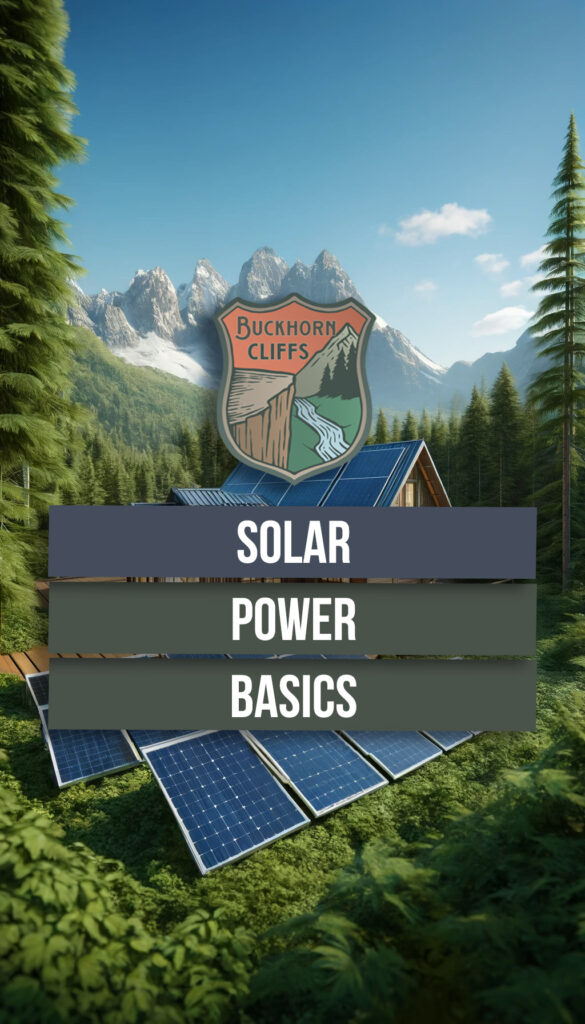
Explore how solar panels generate electricity, the role of charge controllers and batteries, how inverters convert DC to AC power, integration with home electrical systems, and more in this informative guide to solar energy basics.


What You’ll Learn:
- How solar panels capture sunlight and generate electricity.
- The role of solar charge controllers in regulating power flow from panels to batteries.
- Types of batteries used in solar energy storage and their characteristics.
- How inverters convert DC electricity into AC electricity for household use.
- Different types of inverters and their suitability for various solar setups.
- Integration of solar power with your home’s electrical system, including connection to the breaker box.
- Additional information on net metering and backup power solutions for solar systems.
Solar Panels: Generating Electricity from Sunlight
What are solar panels?
Solar panels are devices comprising photovoltaic cells that convert sunlight into electricity. They are typically installed on rooftops or in open areas to capture sunlight effectively.
How do they work?
When sunlight strikes the photovoltaic cells, they generate an electric current through the photovoltaic effect, producing direct current (DC) electricity.
Additional Information:
- Solar panels consist of silicon-based materials that create an electric field upon exposure to sunlight.
- This electric field causes electrons to flow, generating DC electricity.
Solar Charge Controllers: Regulating Power Flow
What is a solar charge controller?
A solar charge controller regulates the voltage and current from the solar panels to prevent battery overcharging.
Importance of charge controllers:
Charge controllers optimize energy production and protect the battery bank from damage, thereby prolonging its lifespan.
Additional Information:
- Solar charge controllers come in various types, including PWM (Pulse Width Modulation) and MPPT (Maximum Power Point Tracking).
- MPPT controllers are known for their higher efficiency and ability to extract more power from solar panels under different conditions.
Battery Bank: Storing Excess Energy
What is a battery bank?
A battery bank stores excess energy generated by solar panels for use during periods of low sunlight or at night.
Types of batteries:
- Lead-acid batteries: Traditional and affordable but require regular maintenance.
- BEST CHOICE: Lithium-ion batteries: Modern, with a higher upfront cost but longer lifespan and lower maintenance requirements.
Additional Information:
- Battery capacity is measured in kilowatt-hours (kWh) and determines the amount of energy that can be stored.
- Depth of discharge (DoD) indicates the percentage of a battery’s capacity that can be safely utilized before recharging.
Inverters: Converting DC to AC
What is an inverter?
An inverter converts DC electricity from the battery bank into alternating current (AC) electricity, suitable for powering household appliances.
Types of inverters:
- String inverters: Basic and cost-effective, suitable for small-scale installations.
- Microinverters: Installed on each solar panel, offering higher efficiency and individual panel monitoring.
- Hybrid inverters: Combine inverter, charger, and battery management functions in one unit, ideal for off-grid systems.
Additional Information:
- Inverters must be appropriately sized to handle the power output of solar panels and meet household energy demands.
- Some inverters feature built-in functionalities like grid connectivity and remote monitoring for added convenience.
Integration with Your Home’s Electrical System
How does solar power integrate with your home?
The AC electricity produced by the inverter is connected to your home’s breaker box, allowing solar-generated electricity to power household appliances alongside grid electricity seamlessly.
Additional Information:
- Net metering enables excess solar electricity to be fed back into the grid, earning credits or reducing electricity bills.
- Backup power solutions like generators or battery backups can provide electricity during grid outages or low sunlight periods.



